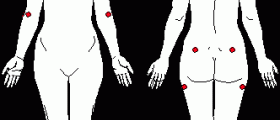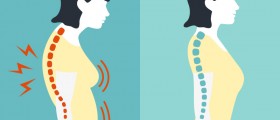
Fibromyalgia is a medical disorder defined by chronic and widespread pain and very painful response to pressure. However, this condition is not limited only to pain, even though pain remains its primary feature. People affected by fibromyalgia often experience severe fatigue, sleep disturbances, stiffness of the joints, and even difficulty swallowing, problems in bladder and bowel movements, as well as cognitive dysfunction. In most cases, affected individuals will also have other apparently unrelated conditions such as depression, anxiety and other stress-related disorders. This is a rare condition and it affects more women than men. It is estimated that about 2 percent of world’s population develops fibromyalgia.
Signs and symptoms of acute fibromyalgia
Fibromyalgia is characterized by widespread pain that is especially pronounced when there is a pressure on certain parts of the body. These spots are known as tender points and they are usually symmetrically distributed on both sides of the body, affecting the region of neck and arms, lower back, hips, elbows and knees. Other symptoms may include tingling of the skin, muscle spasms, weakness in the limbs, and pain along the nerves, twitching of the muscles, palpitations, or bowel disturbances. Many patients complain about cognitive dysfunction, lack in concentration, problems with memory, and low attention span.
Causes of acute fibromyalgia
There is no definite answer to the question what causes fibromyalgia. It is possible that fibromyalgia results form a number of different factors. There is also some evidence that genes may affect development of this disease in some patients. Perhaps the genetic heritage makes an individual more vulnerable to certain risk factors. Fibromyalgia is associated with stressful and traumatic events, even with trauma to the chest, such as during the car accidents. It can also result from repetitive injuries, certain illnesses and diseases.
Risk factors
Being a woman is a significant risk factor for fibromyalgia. Most patients are diagnosed in their middle age and people with certain underlying conditions may be at the higher risk. These conditions include rheumatoid arthritis, systemic lupus erythematosus and ankylosing spondylitis. As already mentioned, there is a possibility that genes play a significant role in the disease. Therefore, people (especially women) with family history of fibromyalgia may be at increased risk.
Treatment for acute fibromyalgia
There is no known cure for fibromyalgia but many available treatments are aimed at management of the symptoms. Patients will probably receive prescription medication, and they will be enrolled in behavioral, alternative and complementary treatments. Exercise is also important part of dealing with fibromyalgia.







_f_280x120.jpg)









Your thoughts on this
Loading...